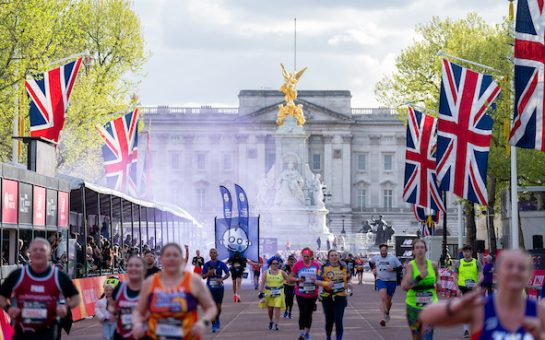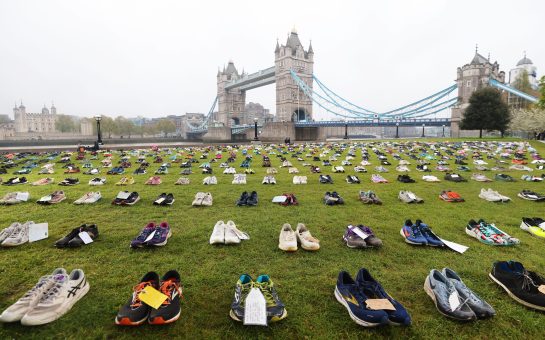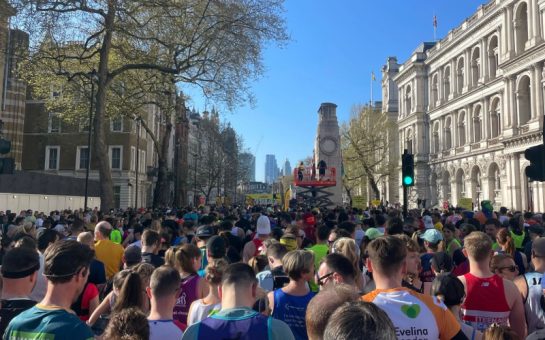Women’s participation at parkruns in south-west London has increased by a mere 3% compared to men in the last ten years, with the gender balance still way short of equilibrium.
On average, only 40% of participants at eight of London’s most well-established parkruns were women in March 2022, compared to 37% ten years previously.
While that constitutes progress those involved with parkrun, and running more broadly, admit that the growth in women’s participation should be greater.
“There is a historical context to it,” said running coach Jo Wilkinson.
“Women have only been running marathons competitively at the top end for much less time than men, and that filters down the pyramid of participation.”
Wilkinson is a running coach with 40 clients, 28 of which are women, and has previously finished in the top 20 at the London Marathon.
She is now the lead coach at Running Jo, whose clients, though wide-ranging in their ability, include a number of England Athletics Masters runners.
Only in 1984 did the Olympic women’s marathon take place for the first time, and Wilkinson believes that it was difficult for women to take up running, with events so inaccessible for so long.
Parkrun has helped change that discourse, with 27 countries now signed up, since the first event took place at Bushy Park in Teddington in 2004.
Wilkinson said: “Parkrun markets itself on inclusiveness. The idea is that anyone of any shape or size can turn up and take part, and that’s what they heavily promote.”
But that messaging was not always as clear, as former communications manager for parkrun UK Danny Norman revealed.
Norman added: “Back in 2012, language was key. It was important to communicate what parkrun was all about.
“The language involved in the results processing was that it was a ‘race report’. We would have a first, second, third and it was about who was the fastest.
“That had to change because all that does is impress on people that you’ve got to be performing, and you can’t say parkrun is not a race while all the language and information available is completely contradictory to that.
“In the past fortnight, first timer’s briefing has just changed to the first timer’s welcome. Things like that are subtle but effective changes.”
But Norman believes that while the communication presents a non-competitive and friendly environment, there are still some who hold conflicting attitudes.
He said: “There is a legacy effect of the old guard who really struggle with the concept of inclusivity and performance, that walking a 5km is not good enough, and that there should be a cap at a particular time.
“That still exists and seeps into certain areas of parkrun.”
That feeling seems to have taken hold in some who are new to running.
According to Wilkinson, a lack of confidence is one of the key factors holding women back.
She said: “A small proportion of the people I work with are beginners and some of them see parkrun as too elite for them.
“There is a deeper societal thing around women’s confidence, around body shape and I think women are slightly more likely to talk themselves out of something.”
Research from parkrun insight ambassador Dr Charlotte Jackson suggests that is the case.
She found that on a given Saturday in the UK in 2019, the average proportion of women walkers and runners was 9% less than the number of registrants.
Sophie McKay, a parkrunner since 2008 and regular volunteer, believes that some people still don’t appreciate that they can complete parkrun at their own pace, or that it can be used as a stepping stone to finishing the event in full.
She said: “If you haven’t been to a parkrun people may not understand that you can walk, jog or run.
“If you haven’t seen it, people might be thinking ‘I’m not sure I can run the full 5km, so maybe I shouldn’t go this week.’”
That lack of confidence may start to manifest itself at school age, as Wilkinson references a worrying drop off in sporting participation among young girls.
Wilkinson said: “There’s the perceived image of what a female should be like, and it’s a wider society thing that is imposed on young people. Sport doesn’t always fit with that.
“There is also the psychological element. Going through puberty and starting menstruation is not always compatible with sport as there is an embarrassment and the practical factor of managing that.”
McKay agreed: “Anecdotally, women and girls stop participating in sport when they leave school.
“To then come back can be quite challenging, particularly if you’ve got a family.”
On the final weekend in March, 47 boys aged 17 or under took part in the Bushy parkrun, compared to just 15 girls.
Wilkinson suggests that a rise in the number of women coaches will help, encouraging women of all ages to take up long-distance running and appeal to those who took part in sport previously.
“Having more women’s leaders means we have more women running groups because of that identification and relatability aspect,” she said.
“But there is a stark difference in the number of male to female coaches.”
Norman too identifies this as an area for improvement and believes that all women coaches should be better supported.
He said: “Some of the best ambassadors and creators of the best parkrun environments are female. I don’t think those people are appreciated enough.
“Identify female leaders and give them the tools for others to follow them.”
More than four million people have participated in parkruns worldwide and for many of those people it has been a welcome entry point to running.
But while parkrun is struggling to improve women’s participation, it’s not the only sport searching for gender equality.
Norman concludes: “I would like to think that parkrun will evolve as society evolves in terms of inclusivity and equality.
“But we’ve still got a way to go.”
Featured image credit: Kevin Wood via Flickr





